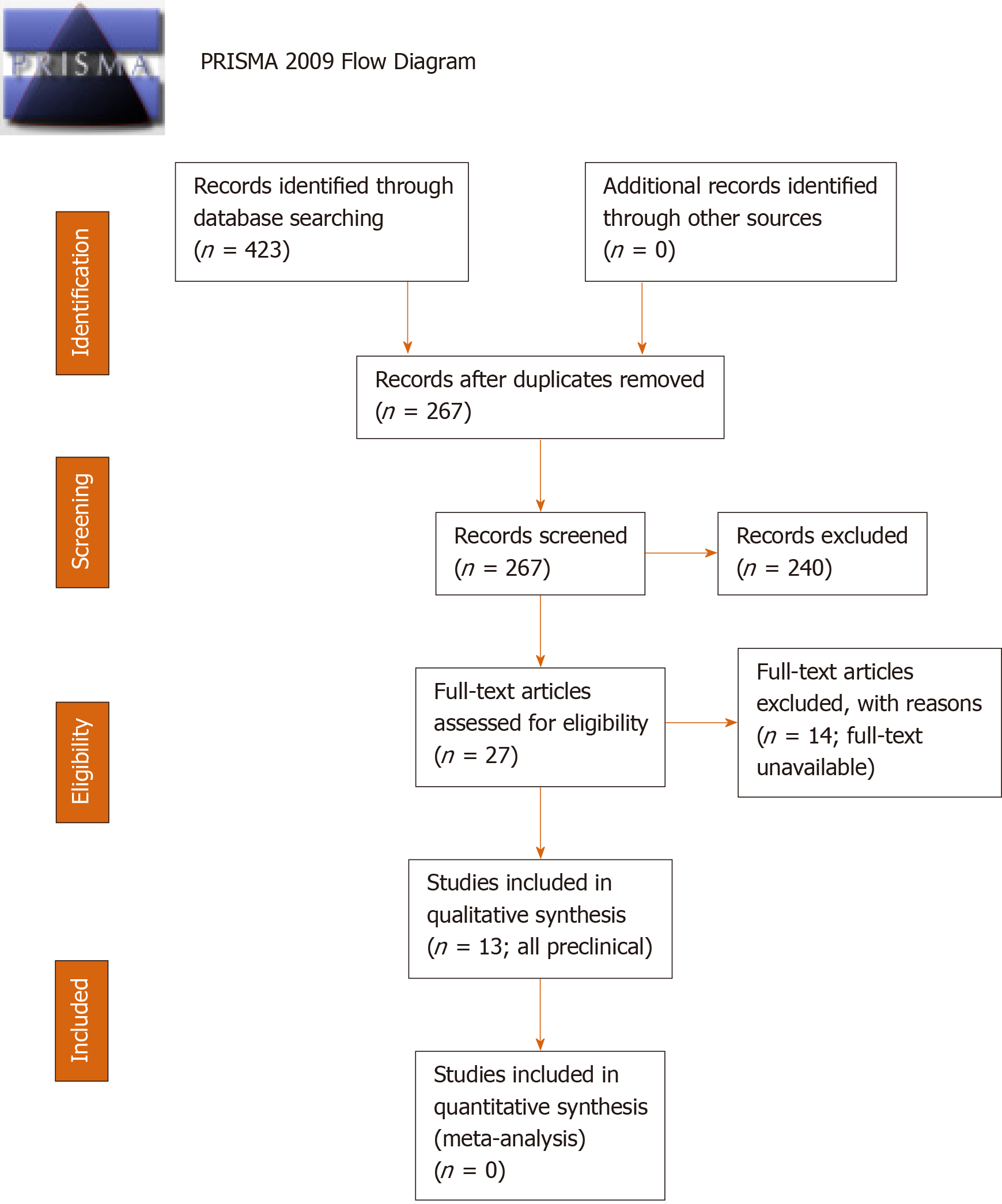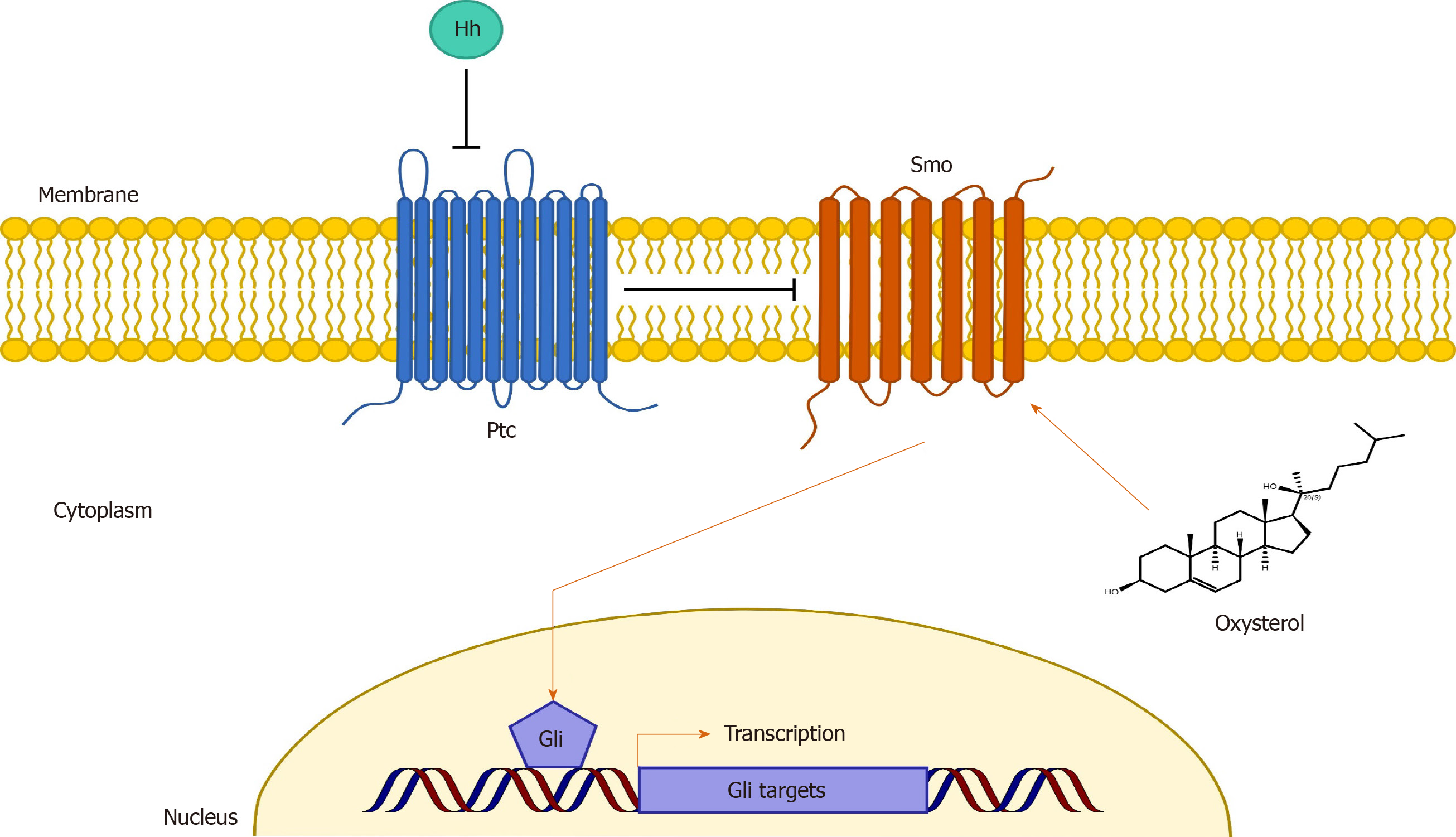Copyright
©The Author(s) 2020.
World J Orthop. Jul 18, 2020; 11(7): 328-344
Published online Jul 18, 2020. doi: 10.5312/wjo.v11.i7.328
Published online Jul 18, 2020. doi: 10.5312/wjo.v11.i7.328
Figure 1 PRISMA 2009 flow diagram for article selection.
Figure 2 Quality assessment summary of the included studies (n = 13).
A: SYRCLE risk of bias items; B: Overall quality indicators.
Figure 3 Molecular structures of the identified oxysterols that have been investigated for in vivo bone tissue engineering in animal models.
Cholesterol is shown for reference. OHC: Hydroxycholesterol.
Figure 4 Conceptual illustration of the proposed primary mechanism by which oxysterols exert their osteoinductive effects.
It is believed that oxysterol-mediated osteoinduction occurs via activation of the Hedgehog (Hh) signaling pathway, which is known to be essential for normal bone development. In canonical Hh signaling, the transmembrane protein Patched (Ptc) inhibits Smoothened (Smo) activity. However, upon binding Hh ligand, Ptc is inactivated, allowing for Smo activation. Activated Smo increases levels of the active forms of Gli transcription factors, which translocate to the nucleus and upregulate multiple genes, including those keys for bone formation. In a stereoisomer-specific manner, it is believed that oxysterols may directly activate Smo, thereby promoting Hh signaling and osteoinduction. Ptc: Patched; Smo: Smoothened; Hh: Hedgehog.
- Citation: Cottrill E, Lazzari J, Pennington Z, Ehresman J, Schilling A, Dirckx N, Theodore N, Sciubba D, Witham T. Oxysterols as promising small molecules for bone tissue engineering: Systematic review. World J Orthop 2020; 11(7): 328-344
- URL: https://www.wjgnet.com/2218-5836/full/v11/i7/328.htm
- DOI: https://dx.doi.org/10.5312/wjo.v11.i7.328












